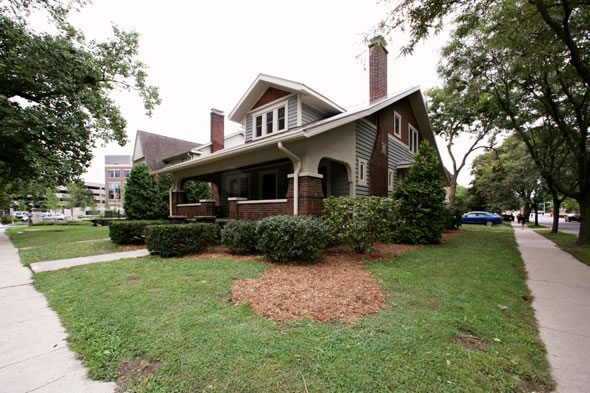“One of these things is not like the other” is a phrase that applies especially to the Retrofitted Net-Zero Energy, Water, and Waste (or ReNEWW) House, a retrofitted 1920s bungalow located just off the Purdue University campus in West Lafayette, Indiana.
Last September, a collaborative team of Purdue and Whirlpool sustainability experts unveiled a suite of green innovations that will help the 3,000-square-foot home achieve net-zero-energy performance.
The ReNEWW House contains a one-of-a-kind, state-of-the-art basement lab that measures each system’s performance. The lab is primarily fit out with Gladiator workbenches and ultra-sensitive monitoring equipment. Researchers and engineers from Purdue and Whirlpool live on-site and run the lab, which is expected to collect more than 3.1 million data points in its first year of operation.
“The data and the lab work show results in real time,” says Ronald Voglewede, Whirlpool’s director of global sustainability. “People want to see these systems working. We can give the data to our partners in order to help them improve their products.”
3,000
Square footage of the bungalow being retrofitted to net-zero-energy performance
3.1m
Data points collected by Purdue University and Whirlpool researchers
2025
Year when water costs may exceed electricity, according to some studies
Even though the ReNEWW House is ideally insulated, its location in Indiana means it requires heat during the colder months, which is where the home’s solar and geothermal systems shine. The Solar Zentrum, solar array collects thermal energy to help power building systems and provide domestic hot water; at the same time, the GeoComfort geothermal system provides heating for the home. In capturing thermal energy from the panels, they are able to run at peak efficiency by avoiding overheating.
A host of insulating products helps keep the home sealed and properly acclimatized throughout the year. A blowing agent typically used for refrigerators was repurposed and used in installing the closed-cell, spray-foam insulation made by Lapolla Industries.
Voglewede says appliance leader Honeywell provided the agent. “They formulated a product that addressed a significant concern with traditional blowing agents—their global warming potential—and was able to achieve a 99.9-percent reduction in this metric,” he says.
Triple-pane windows and siding made from 50-percent recycled materials, provided by Great Lakes Window and Mastic, respectively, make the spray-foam insulation perform even more efficiently, helping to regulate the home’s heat loss and gain.
Whirlpool took great care in installing appliances that will slash the home’s electrical and water loads. When it comes to food preparation, the home’s induction cooktop and double oven significantly increase the energy efficiency of cooking. “The double oven offers two ovens of different sizes that can run at different temperatures,” Voglewede says. “Why heat an entire oven for a 9-by-13-inch pan?”
In accordance with numerous projections, Whirlpool believes water scarcity will be a central resource issue in the near future. “Water bills will exceed energy bills by 2025 in most major cities,” Voglewede says. “Net-zero water is truly the next big world challenge.”
With this in mind, the ReNEWW House will be equipped with numerous experimental technologies to help reduce and reuse precious water in the summer of 2015. “The house will have a rainwater-collection and -purification system large enough to cover all needs, both potable and non-potable, in addition to a greywater system, which can be used for toilet flushing,” he says. Low-flow fixtures and appliances that use minimal water also help reduce consumption. Water reductions of 30–50 percent are expected.

